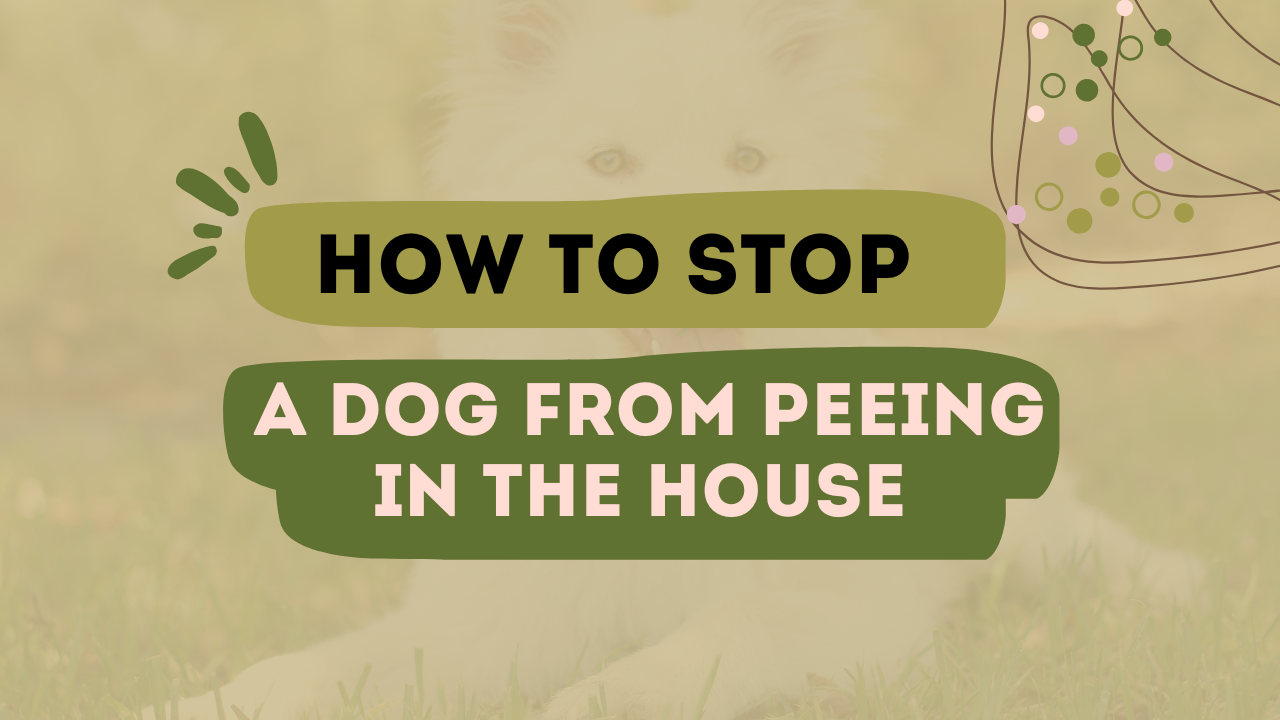Okay, so you’re wondering how to stop a dog from peeing in the house. First of all—hey, you’re not alone. Like, seriously, not even close. Every dog owner has been there at some point. You’re walking into the room, already suspicious because it’s too quiet, and then boom—wet carpet. Again. The thing is, no matter how much we love our dogs, the whole pee-in-the-house thing gets old fast. The good news? There are real ways to deal with it, and most of them don’t involve yelling or giving up hope (or your deposit if you’re renting, lol). So let’s dive in and figure out what’s going on with your pup—and how to make the madness stop.
How to Stop a Dog from Peeing in the House
Let me share with you a 8 Step Guide that will help you to stop your dog from peeing in the house and these are as follows:
Table of Contents
1. First Things First: Rule Out Medical Issues
This might sound boring, but honestly—it’s super important. If your dog was house-trained and suddenly starts peeing indoors, it might be a sign something’s off physically. Urinary tract infections (yup, dogs get ’em too), bladder stones, diabetes, kidney issues…all of these can mess with your dog’s bathroom habits.
Pro tip: Before you dive into training or punishment (please don’t do that, btw), take your furry pal to the vet. If there’s a medical issue, no amount of training is gonna fix it.
2. Get Back to Basics with House Training
Sometimes, even older dogs need a refresher course. Whether it’s a rescue, a puppy, or a dog that’s just gotten a bit too comfy—starting over with house training can do wonders.
Here’s the drill:
- Take them out frequently. Like, more than you think you need to. After waking up, after eating, after playing…you get the idea.
- Use the same door. Dogs love routine. The more predictable, the better.
- Praise like you mean it. When they pee outside, throw a party. Treats, happy voices, maybe even a little dance. They gotta know they did good.
Some people get frustrated here because they think, “He KNOWS he’s not supposed to pee inside!” And maybe he does, kind of. But dogs don’t think in guilt. They think in what gets me a treat and happy mom or dad?
3. Keep Things Squeaky Clean
If your dog keeps going back to the same spot, there’s probably a reason. Dogs have crazy good noses, and even if you can’t smell it, they probably still can. So make sure to clean accidents thoroughly—like really thoroughly.
Skip the regular household cleaner and go for an enzyme-based pet cleaner. It breaks down the urine on a molecular level (science!) and makes sure the smell is gone for real.
Also, random tip—but don’t clean it with ammonia. Dog pee has ammonia in it, and it actually makes them more likely to pee there again. Not helpful.
4. Catch Them in the Act (But Don’t Be a Jerk About It)
If you actually catch your dog mid-squat indoors—interrupt gently. Clap your hands or say “Ah-ah!” then scoop them up (if you can) and take them outside right away.
Once outside, let them finish their business. If they do—guess what? Praise party time again.
But whatever you do, don’t rub their nose in it. That’s outdated advice, and it just makes your dog scared of you—not less likely to pee indoors. We’re training, not traumatizing.
5. Watch for Subtle Signals
Not all dogs are super obvious when they need to go out. Some will whine or bark. Others will just quietly wander over to the door and stare at it, like a little statue waiting for magic. (Why are they like this?)
If you miss these signs, you might think they’re “sneaking off to pee” when really, they were trying to tell you, and you just didn’t notice.
Try teaching them a cue—like ringing a bell by the door. It’s surprisingly easy and can make things so much clearer for both of you.
6. Consistency Is the Name of the Game
Dogs love patterns and routines, and they really thrive when things are predictable. If one day you’re letting them out every 2 hours, and the next day it’s every 6, they’re gonna get confused. And confusion leads to accidents.
Stick with a schedule as best as you can. Feed them at the same time every day. Let them out right after. Keep walks consistent. If life’s a little chaotic (hey, same), set alarms or use a dog-walking app for reminders.
7. Marking Is a Whole Different Thing
If your dog is lifting a leg indoors instead of full-on peeing puddles, you might be dealing with marking behavior, especially if they’re not spayed or neutered. It’s more of a “this is mine” situation than a “I have to go!” one.
Spaying or neutering often helps reduce marking, and you can also use training to redirect the behavior. Belly bands (little doggie wraps) can be a temporary tool while you’re working on the issue.
8. Be Patient (Ugh, I Know)
Look, I get it. It’s annoying. It smells. It’s embarrassing when guests come over. But your dog isn’t doing it to mess with you. They’re not being spiteful, or trying to “get back at you” for leaving for work. That’s not how dog brains work.
They need guidance, consistency, and yeah—a little grace.
You’ve got this. Pinky promise.
Final Thoughts
Stopping a dog from peeing in the house isn’t always quick, and it’s definitely not always easy. But with a little patience (okay, maybe a lot), a plan, and some good ol’ positive reinforcement, you can totally turn things around.
And hey, if all else fails, maybe consider a rug that matches pee stains? (Kidding. Mostly.)
If you found this helpful, share it with another dog parent who’s drowning in pee problems. And remember: every good dog was once a messy one.

